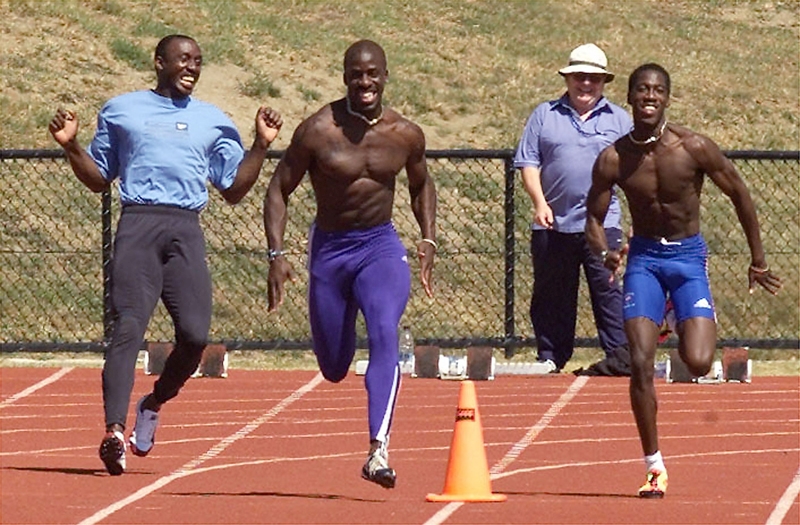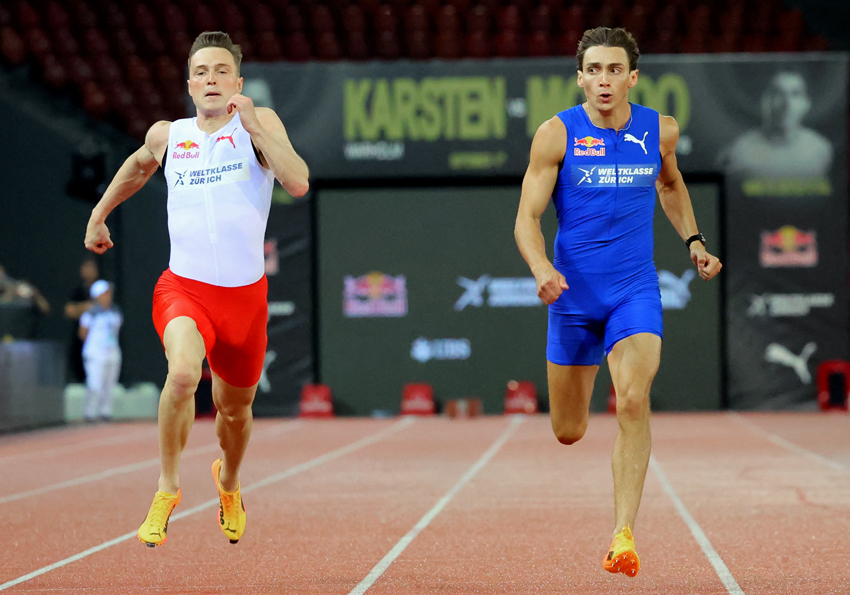Interval training: making the most of duration

Andrew Hamilton looks at a landmark study on interval duration; which session is better for training adaptation – fewer longer intervals or lots of shorter ones?
Studies have shown time and time again that interval training – bursts of harder effort with rest periods in between - is one of the most efficient tools at your disposal for building endurance fitness, helping you to bike/run/swim faster for longer before fatigue sets in. In the past however, ‘interval training’ has had a bit of an image problem, often being associated with long, gruelling and monotonous efforts and only relevant to elite athletes. The good news is that much recent research shows that short or even very short work intervals of around 30 seconds (which are much less demanding to perform than long intervals) can produce excellent gains in endurance.Long vs. short
Despite these study results however, many endurance athletes may be wondering just how effective short intervals really are. In particular, can they really be as effective for building endurance as longer-duration intervals? This is a valid concern; many of the studies on short-duration intervals have used relatively untrained, or only recreationally trained subjects – not subjects who were already endurance trained. To get some further insight into this question, Norwegian scientists at the University of Lillehammer in Norway compared the training effects of traditional long-duration intervals (5-minute intervals) with the same total workload - but performed as short-duration (30-second) intervals(1).In this study, a group of 16 trained cyclists were split into two groups, both of which underwent a 10-week interval-training programme. These intervals programmes were structured as follows:
- Group 1 - Using long intervals of five minutes’ duration (four intervals in each session) averaging around 324 watts during each interval.
- Group 2 – Using short intervals, with each interval lasting just 30 seconds duration at an average of 363 watts.
Before and again after the 10 weeks of training, all cyclists were fitness tested to see which protocol had proved most effective. In particular, the scientists looked at the cyclists’ maximum oxygen uptake (aerobic power), maximum sustainable power, their power output at second lactate threshold (the point at which lactate rapidly accumulates in the muscles forcing you to slow down) and how power they could sustain during a 40-minute all-out time trial.
What they found
Before the interval-training programme, there were no significant physiological/fitness differences between the two groups. After 10 weeks of training however, the short-interval cyclists increased their aerobic power by a whopping 8.7% whereas those performing long intervals didn’t make any gains. Likewise, when it came to maximum sustainable power, the high-intensity/short-interval cyclists improved by around 8.5% whereas the long-interval cyclists made no significant gains. The long-interval cyclists did make small gains (5%) in power output at 2nd lactate threshold, but once again the short-interval trained cyclists came out on top with 12% gains. Finally (and in case you’re still not convinced!), the short intervals were also more effective than long intervals at boosting average power output in the 40-minute time trial (12% vs. 4%).The bigger picture
On the face of it, these results might seem extremely surprising. However, other studies on endurance athletes (particularly cyclists) have demonstrated that short intervals of 30 seconds can be very effective at building aerobic endurance(2). What makes this study particularly relevant though is that the long and short-interval workloads/total durations were evenly matched.This is surprising because you might think that to build aerobic endurance sustainable over long durations means performing long aerobic-type workouts – eg long intervals. However recent research suggests that the intense bursts during interval training are able to stimulate the body’s production of a key molecule called PGC-1α, which then acts on ‘endurance genes’ buried in the cell nucleus, boosting their activity(3). As a result, these genes produce more mitochondria in muscle cells with the result that the muscles’ capacity to produce energy aerobically is enhanced. In short, the short intervals were MUCH more effective at building aerobic fitness than the longer intervals, suggesting that they deserve serious consideration by any cyclist/triathlete or other endurance athlete wanting to raise fitness and performance levels. In terms of adding them to your existing programme, those with limited experience of interval training should try including at least one session of short intervals into a weekly training programme; start with 4-6 bursts of 30 seconds going very hard (but not flat out) interspersed with one minute of rest. Build up to 8-10 bursts. Those with high fitness levels and plenty of interval-training experience should use the protocol above but reduce the rest time to 30 seconds between efforts. Build up to 16 work intervals.
References
- Scand J Med Sci Sports. 2015 Apr;25(2):143-51
- Med Sci Sports Exerc 2007; 39:665-671
- J Physiol 590.5, 2012; pp 1077–1084
You need to be logged in to continue reading.
Please register for limited access or take a 30-day risk-free trial of Sports Performance Bulletin to experience the full benefits of a subscription. TAKE A RISK-FREE TRIAL
TAKE A RISK-FREE TRIAL
Newsletter Sign Up
Testimonials
Dr. Alexandra Fandetti-Robin, Back & Body Chiropractic
Elspeth Cowell MSCh DpodM SRCh HCPC reg
William Hunter, Nuffield Health
Newsletter Sign Up
Coaches Testimonials
Dr. Alexandra Fandetti-Robin, Back & Body Chiropractic
Elspeth Cowell MSCh DpodM SRCh HCPC reg
William Hunter, Nuffield Health
Keep up with latest sports science research and apply it to maximize performance
Today you have the chance to join a group of athletes, and sports coaches/trainers who all have something special in common...
They use the latest research to improve performance for themselves and their clients - both athletes and sports teams - with help from global specialists in the fields of sports science, sports medicine and sports psychology.
They do this by reading Sports Performance Bulletin, an easy-to-digest but serious-minded journal dedicated to high performance sports. SPB offers a wealth of information and insight into the latest research, in an easily-accessible and understood format, along with a wealth of practical recommendations.
*includes 3 coaching manuals
Get Inspired
All the latest techniques and approaches
Sports Performance Bulletin helps dedicated endurance athletes improve their performance. Sense-checking the latest sports science research, and sourcing evidence and case studies to support findings, Sports Performance Bulletin turns proven insights into easily digestible practical advice. Supporting athletes, coaches and professionals who wish to ensure their guidance and programmes are kept right up to date and based on credible science.









